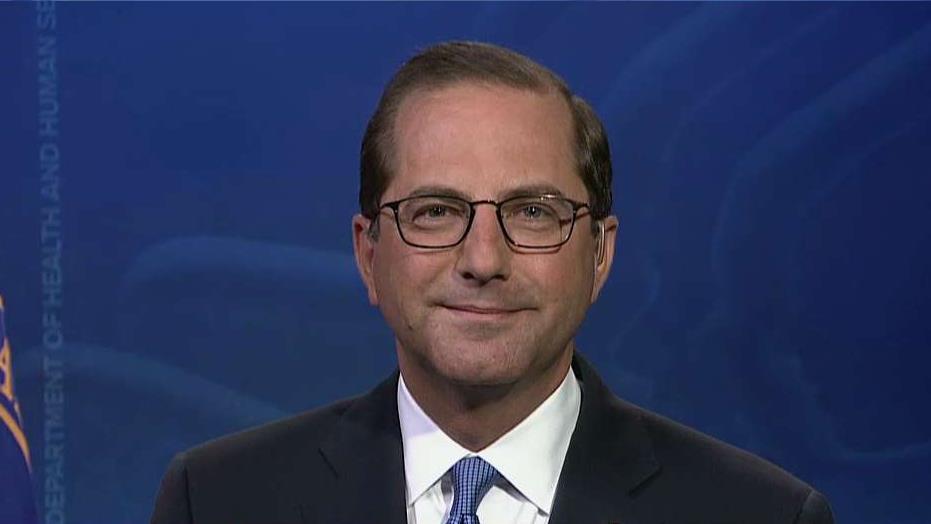Here are the four pillars of Trump's new drug price policy
President Donald Trump’s initiative to reduce prescription drug costs -- which he’s expected to lay out in a board blueprint in a speech on Friday -- is one of the most comprehensive plans for drug affordability proposed by a president, according to Health and Human Services secretary Alex Azar.
“America will remain the innovative pharmaceutical center of the world, but our patients are going to get more affordable drugs and our taxpayers are going to get better deals under the president’s initiative,” he told FOX Business’ Charles Payne during an interview on Friday.
The proposal, which includes 50 different initiatives, seeks to increase competition in the industry by making it easier for cheaper, generic drugs to reach the market; reducing consumers’ out-of-pocket spending on medicines; cutting incentives for doctors to write high-price prescriptions; and improving negotiations in the government-subsidized programs, Azar said.
Trump has repeatedly criticized the pharmaceutical industry for “getting away with murder” by jacking up the prices of drugs that are manufactured in other countries. Drug companies, however, insist that it costs between $1 and $3 billion over the several years it takes to create a drug. They also say they almost immediately lose the ability to make money off of it when the generic version hits the market.
White House officials said Trump’s plan would also require insurers and pharmacy benefit managers, the middlemen, to share a portion of rebates they receive on prescription drugs with consumers to lower their out-of-pocket costs.
Rebates often make so patients don’t need to pay the full price for drugs, but they’ve also faced increased scrutiny in recent years as patients are forced to pay the whole cost -- thanks to high deductible health plans -- despite paying the rebate.
“That’ll be part of what we discuss today,” Azar said. “These weird incentives that we have in our system.”
